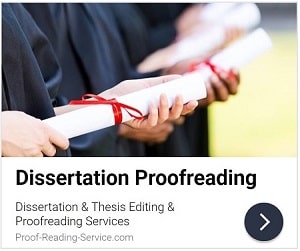Free Sample Letters for Withdrawing a Manuscript from a Publisher
Withdrawing an academic or scientific manuscript that has been submitted to a journal or press for publication is never advisable and should only be considered when absolutely necessary. If your manuscript has been submitted very recently and has not yet entered the publisher’s editorial and review process, a withdrawal request rarely presents a problem. However, it will not make the best impression, so do be sure to apologise for any inconvenience and give a clear if very brief reason why the withdrawal is necessary.
Once a submitted manuscript has entered the editorial process and is under peer review, it is considered unethical to withdraw the manuscript and doing so may prevent future publication through the publisher. When peer review is complete, however, and the editor sends you reviewer comments and his or her own decisions about your work, you have the right as the author to withdraw your manuscript on the grounds that you are unwilling or unable to make the changes required to achieve publication. This does not mean that being asked to improve your grammar or correct your spelling is a justifiable reason for withdrawal at this point. Sound grammar and spelling are necessary, after all, for clear communication. However, if one or more reviewers request major changes that will compromise what you think important about your research, withdrawing your manuscript for submission elsewhere may be the best option, especially if you cannot persuade the editor that your point of view is valid. Sample Letter 1 below is written by a professor who has submitted a book manuscript to a university press, but is not in agreement with the revisions requested by the publisher’s peer reviewers. He makes his position and publishing options clear and invites the editor to help him resolve the problem.
If your manuscript has already been accepted by an editor and you have agreed to publication through the journal or press, it is simply wrong to withdraw your work without truly compelling reasons and doing so can result in penalty fees as well as a refusal to publish any of your writing. Compelling reasons can include recently discovered or finally confessed instances of academic or scientific misconduct, especially if publication might bring harm to more than the individuals responsible for the questionable activities, but my focus here is on situations in which an author or authors must negotiate the withdrawal of a manuscript for legitimate, unforeseeable and unavoidable reasons. Sample Letter 2 is therefore written by a postdoctoral researcher who is co-authoring with a senior academic a chapter in a collection of essays, but her co-author has fallen ill during the research and writing process. The situation is clearly explained to the editor, and the corresponding author also suggests alternatives to the original design for the chapter.
Finally, withdrawing a paper after it has already been published by a journal is never an appealing option, and the ramifications can be legal as well as ethical and financial. Even when a journal paper exists only in a digital online version, it usually cannot simply be withdrawn once it has been formally published; instead, it must be retracted, with the notice of retraction and all the possibilities of misconduct it implies becoming a permanent part of an author’s publishing career. The reasons for considering such an extreme action for a published manuscript must therefore be very good indeed, and poor treatment of your work by a disreputable journal is certainly among these good reasons. In Sample Letter 3 an early-career scholar who obviously made an unwise choice of journal for a co-authored research paper writes to the editor requesting that the published paper be withdrawn or corrected. There is clearly a history of problems and the paper as published will be detrimental to the authors’ careers and professional reputations – a striking reminder of how important it is to learn about a journal before submitting your writing and watch for warning signs of trouble so that you can withdraw your paper before matters escalate.
All three letters are entirely fictional, but they posit realistic situations and will help with effective formatting, appropriate writing styles and useful phrases as well as with addressing three specific and compelling reasons for withdrawing an academic or scientific manuscript submitted to a publisher in good faith. I have kept the content simple and general to ensure accessibility for researchers in all fields of study.
Sample Letter 1: Withdrawing a Manuscript from a University Press after Peer Review
Professor G. G. Innovator
Department of Sociology
University of New Research
8 Round the Bend Road
Berkeley, CA, USA, 94709
510-555-1100
[email protected]
Dr R. R. Publisher
Social Sciences Editor
University of New Research Press
22 Round the Bend Road
Berkeley, CA, USA, 94709
510-555-1001
[email protected]
February 20, 2018
Dear Dr Publisher,
Thank you for your message and your thoughtful comments on my manuscript entitled Disconnecting & Reconnecting in the Digital Age. I am pleased that you think the book appropriate for the University of New Research Press and I remain eager to see it published in the Current Concerns series alongside my earlier books. However, I am uncertain that I will be able to accommodate all the changes requested by the second and third of the peer reviewers who assessed my manuscript. Please let me explain.
Since your comments make it clear that you have read and carefully considered the recommendations of the peer reviewers, you no doubt realise that Reviewers 2 and 3 found fault with the interdisciplinary methods I describe in the third chapter of the manuscript, particularly with my means of collecting data from people texting at bus stops as outlined in Section 3.5 on pp.94–97. I acknowledge that my approach here is innovative, but that is precisely what makes it so valuable and the results I obtained so unlike those achieved through traditional methodology. You do not mention this aspect of my work in your commentary on the reviewer feedback, but you do indicate that addressing their concerns is necessary for acceptance, so I can only assume that you, too, would like to see the changes they specify for this methodology. Unfortunately, I am unwilling to alter my methods and the many parts of my book they affect. If I have understood your letter correctly, I will therefore be forced to withdraw my manuscript and submit it to a press more willing to publish this innovative research.
My defence of the research methods I use in my manuscript is not unjustified. In fact, I recently gave a research paper reporting very similar methods at a conference in England and was approached after my talk by an editor who is actively seeking manuscripts that exemplify the usefulness of precisely this kind of methodology. He was disappointed to learn that I had already submitted my most recent book to another press and encouraged me to remember him when I was next seeking publication. Our conversation together convinced me that he would be delighted to publish my book without the major changes in research methods the peer reviewers are requesting, and I am sure you understand that I must prioritise my research and what I believe to be its most valuable aspects.
Please do not read this as an indication that I do not appreciate the time and effort you and the peer reviewers have dedicated to my manuscript. I do indeed and am more than willing to make the revisions necessary to accommodate all the other reviewer comments. I also do not mean to suggest that I no longer wish to publish my book through the University of New Research Press. I assure you again that this is my first choice and I am hoping that you are willing to consider and assess the reviewer comments in relation to my methodology. I would be happy to discuss the matter further with you and ideally we can arrive at a mutually satisfactory resolution and move ahead with publication. However, if this is not possible, please consider this letter a formal request to withdraw my manuscript from the University of New Research Press.
Many thanks yet again for your time and thoughts. I look forward to your response.
Sincerely,
Gregory Innovator
Dr G. G. Innovator
Professor of Sociology
University of New Research
Sample Letter 2: Withdrawing an Essay for an Edited Collection Due to Illness
Dr Amanda Scholar
Department of English and Related Literature
University of the Northeast
155 Research Road
York, North Yorkshire, UK, YO10 2SS
01904 666333
[email protected]
Dr Bona Editor
Department of World Literature
University of the Southwest
10 Tintagel Heights
Trevena, Cornwall, UK, PL34 0DD
01840 444222
[email protected]
22 February 2018
Dear Dr Editor,
It is with deep regret that I write to inform you that Professor Achiever and I will not be able to submit our paper entitled ‘The Lost Sonnets of Shakespeare in the Earliest London and Paris Editions’ for Rediscovering Lost Literature. We remain grateful for your kindness in accepting our paper draft despite Professor Achiever being too ill last fall to provide more than a basic outline of his half of the work. Fortunately, his health is improving daily now and we are hoping that he will recover completely over the coming year, but it is extremely unlikely that he will be well enough to complete his part of our paper by the deadline next month.
I wish that I could fill the gap by writing about Professor Achiever’s work for him, but I am afraid that he has not yet completed his research and I am not a specialist in French literature, so I do not feel that I could do his work or your collection justice by attempting to resolve the problem in this way. I would, however, be willing to offer you a somewhat shorter paper with a focus on the London edition of the lost sonnets and I could certainly offer some general comments and observations about the Paris version as well. I would also be able to let readers know that Professor Achiever’s more detailed research is forthcoming, and he is in full agreement with this solution to the problem.
We are also open to any suggestions you might have, as we would prefer to offer you an altered paper for what will be a valuable and fascinating collection than to withdraw our chapter altogether. However, if you think that withdrawal is the best option, we very much hope that you will be able to find someone else to contribute a chapter on Shakespeare’s poetry on such short notice.
We sincerely apologise for the inconvenience and extra work this situation has caused and look forward to hearing your thoughts.
With the very best of wishes for the Lost Literature collection,
Amanda Scholar
Dr Amanda Scholar
Postdoctoral Researcher
University of the Northeast
Sample Letter 3: Withdrawing a Research Paper from a Predatory Online Journal
Dr Born Yesterday
Department of Biology
University of Ontario
1313 Richelieu Road
Ottawa, ON, Canada, K1P 2S2
613-613-6133
[email protected]
Editor in Chief
Easy Access Journal of Biological Sciences
111A Nonexistent Street
New York, NY, USA, 10001
929-929-9299
[email protected]
February 28, 2018
Re: Manuscript Submission No.7821, published February 28, 2018
Dear Editor-in- Chief,
I am sorry to have to write yet again regarding problems with our paper entitled ‘We Should Have Chosen More Carefully: A Study of Early Nesting Behaviours in Migratory Songbirds.’ My co-author Dr Dormiens and I have just accessed the formally published version of our paper that appeared online today and discovered that none of the changes we insisted upon prior to publication were completed, although you agreed in writing that they would be.
Unfortunately, our own errors – and I am certainly not denying that they exist – combined with the more extensive errors your editorial processes have introduced render the paper unprofessional, inaccurate and unclear for readers. The most visual of the problems lie in the inconsistent headings that no longer provide an effective structure for the research and discussion, and the tables in the appendix, which have been reduced to nonsense due to misaligned and misplaced columns and rules. Problems with the main text remain on every page and the result is simply not publishable from our point of view. The paper must be removed from your website immediately as we consider our options.
At present, we are so disappointed with your unexpected fees and unpredictable editorial practices that our first choice would be to withdraw the paper altogether. If you agree, we await your formal confirmation that the paper has been entirely removed from your website and all rights have been returned to us as the authors, because we are eager to have the research properly published elsewhere. However, we have agreed to publish the paper in your journal and still hold out hope that a satisfactory standard of scholarly publication can be achieved. If you are willing and able to make the changes we agreed to as necessary in our email exchange last week, we are therefore willing to have you publish the revised paper, but we must insist that the corrected pdf of the manuscript be sent to us for approval before it is published.
Thank you for your time and attention. We look forward to your reply so that we can arrive at a hasty and effective solution to this problem.
Sincerely,
Born Yesterday
Dr B. Yesterday
Assistant Professor of Biology
University of Ontario
&
Sheila Dormiens
Dr S. Dormiens
Assistant Professor of Biology
University of Ontario
You might be interested in Services offered by Proof-Reading-Service.com
Journal Editing
Journal article editing services
PhD Thesis Editing
PhD thesis editing services
Expert Editing
Expert editing for all papers
Medical Editing
Medical Editing Services
Research Editing
Research paper editing services
Book Editing
Professional book editing services

















